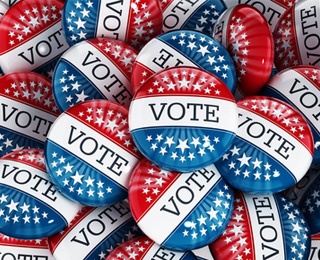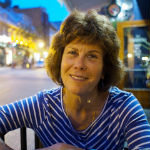Published: August 22, 2016
 “Voting is arguably the most important civic opportunity given to citizens in the United States.”
“Voting is arguably the most important civic opportunity given to citizens in the United States.”
So begins a U.S. Census Bureau analysis of age-related voting trends in presidential elections from 1964 to 2012.
When it comes to presidential voting, men and women 65 years of age and older take advantage of this critical opportunity – many would add responsibility - more than any other age group.
“In contrast to young voters, in recent presidential elections Americans 65 years of age and older have typically had voting rates higher than all other age groups. In 2012, for example, the voting rate for those 65 years and older was 69.7 percent, about 6 percentage points above the next highest age breakdown,” writes Thom File.
These days, voting could not be easier. People can register to vote at public libraries, motor vehicle bureaus and other government offices, even online. Once registered, any voter can cast a ballot weeks before the election, in person or by mail.
So if voting is so easy for everyone, why is the percentage of older adults who cast a ballot so much higher?
Factors in their Favor
Compared to other age groups, especially young people, older adults tend to change addresses less.
That’s important for two reasons. When you move, you have to notify state election officials, or re-register if you relocated to a new state. And while that process also has been streamlined, many people just don’t take the time to do it.
But there is a second, subtler reason why staying put increases voting.
"People over 65 have more residential stability. The longer you are in a place, the more ties you have to the community and the more campaigns that are likely to mobilize you,” explains Eitan Hersh, an assistant professor of political science at Yale University and coauthor of a voting report conducted by Harvard and Yale researchers.
Another reason to explain high turnout of older adults is that they typically have more time, compared to the time crunch of younger voters, writes Emily Brandon, senior editor for Retirement at U.S. News.
“More time” can be used to study issues and platforms, volunteer for campaigns and attend candidate forums and rallies.
In a recent U.S. Census Bureau study, the number one reason people said they did not vote was because they were “too busy.”
Also social norms play a role. "With older folks, there is a norm to vote. They think of themselves as voters, and they care about being a voter," says Eitan Hersh. "People who are detached from the election system are perfectly willing to say they didn't vote."
Issues Matter Too
Many older adults heavily, or solely, depend on Social Security and Medicare for financial and medical support. These two government programs, along with the defense budget, comprise the country’s largest budgets. Depending on an election’s outcome, slashed benefits could dramatically affect their lives.
According to Ann Brenoff, Huffington Post senior writer, other issues that might motivate older adults to get to the polls include: financial relief for family caregivers; age discrimination in the workplace; and Alzheimer’s disease research.
Party Preference
If older adults favor electing a president who shares their demographic they have two choices – 70-year-old Donald Trump or 68-year-old Hillary Clinton.
Voting by party affiliation is not as clear-cut either. According to a Pew Research Center report last year, 47% of those in the Silent Generation (ages 69-86 in 2014) say they are Republican or lean Republican, while 43% affiliate with the Democratic Party or lean Democratic.
And the Baby Boomer generation, ages 50-68 in 2014, is politically divided too. “Older Baby Boomers have consistently had a more Democratic imprint than younger Boomers. Older Boomers were born in the late 1940s and early 1950s and came of voting age in the late 1960s and early 1970s, during Richard Nixon’s presidency. Younger Boomers were born later (in the mid-to-late 1950s and early 1960s) and largely came of age in the 1970s and early 1980s, during the presidencies of Jimmy Carter and Ronald Reagan,” according to Pew Research.
Baby boomers constitute almost one-third of the U.S. adult population. How this generation votes in upcoming elections as they move into the older adult demographic could have a major impact on our elections. Stay tuned.
 In the past, Molly Kavanaugh frequently wrote about Kendal at Oberlin for the Cleveland Plain Dealer, where she was a reporter for 16 years. Now we are happy to have her writing for the Kendal at Oberlin Community.
In the past, Molly Kavanaugh frequently wrote about Kendal at Oberlin for the Cleveland Plain Dealer, where she was a reporter for 16 years. Now we are happy to have her writing for the Kendal at Oberlin Community.





